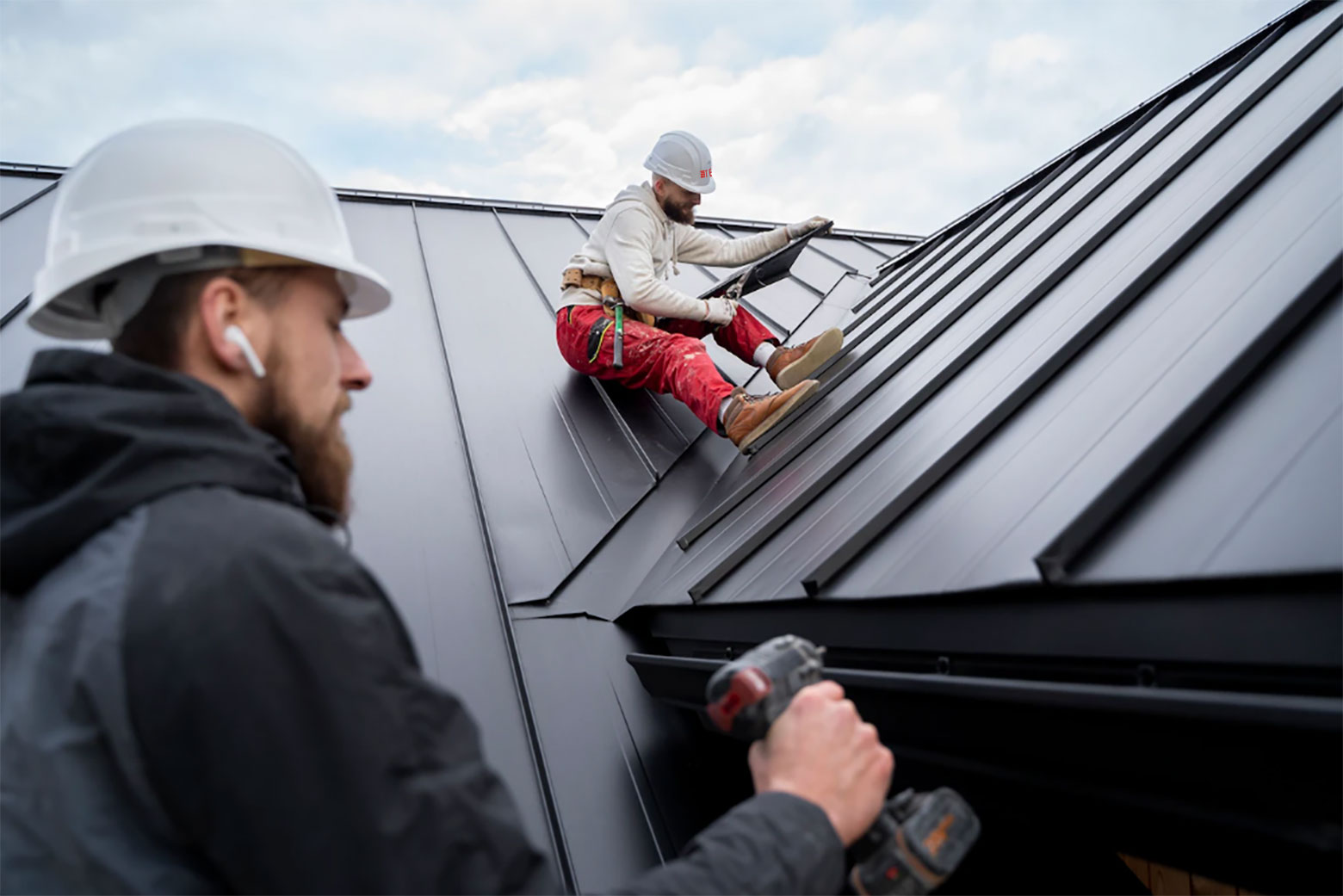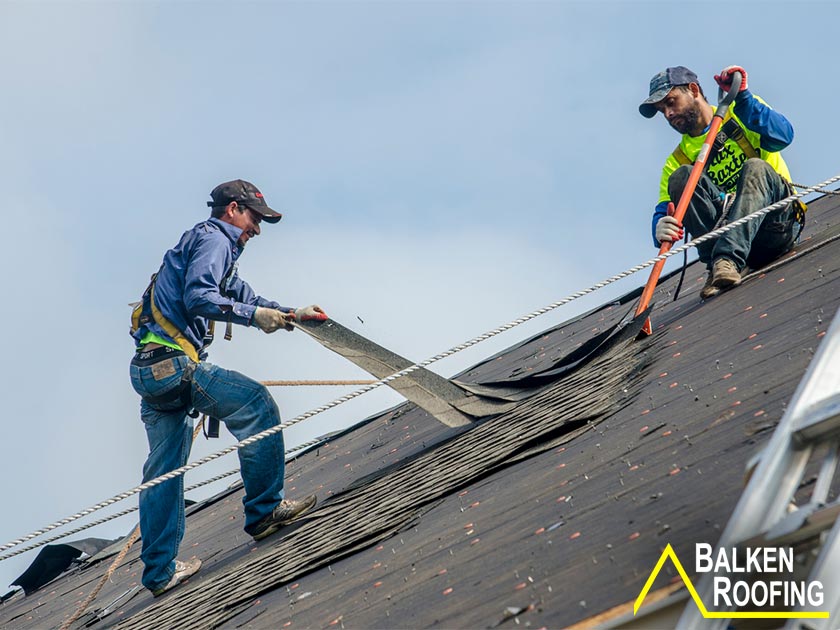A Home owner's Overview to Types of Roofs: Selecting the Right Style for Your Needs

Popular Roofing System Styles
When it involves picking a roof covering design, home owners often weigh their options carefully to ensure both aesthetic appeal and capability. Amongst one of the most preferred styles are the gable, hip, and level roofing systems, each offering unique advantages and aesthetic attributes.
Gable roofings, defined by their triangular shape, are favored for their simple layout and reliable water drain. This style is particularly fit for areas with heavy rains or snow, as it lessens the danger of water pooling.
Hip roofs, which incline on all four sides, provide added security and toughness, making them an exceptional choice for locations vulnerable to high winds. Their architectural complexity permits higher design versatility and can boost the general curb allure of a home.
Flat roofs supply a contemporary aesthetic and optimize functional exterior space, making them preferred for urban setups. While they require even more maintenance to avoid water build-up, their streamlined look can enhance contemporary style.
Ultimately, the selection of roofing system design should show the house owner's individual preference while taking into consideration aspects such as local climate, architectural layout, and potential resale worth. Each design contributes distinctively to a home's overall character and efficiency.

Material Options
Selecting the proper roof covering material is just as crucial as selecting the appropriate style, as it considerably affects the roof covering's durability, maintenance demands, and general visual. roofers oahu. Home owners have a selection of options to consider, each with distinct benefits and disadvantages


Steel roof provides remarkable longevity and long life, frequently exceeding 50 years, while additionally being immune and lightweight to fire and rot. Steel roofing systems can be more pricey upfront.
Clay and concrete ceramic tiles offer a timeless look and remarkable life expectancy yet need a sturdy framework due to their weight. These products are very long lasting and resistant to severe climate condition. Timber shakes give a rustic aesthetic yet necessitate normal maintenance to stop rot and insect damages.
Finally, artificial roofing products, such as rubber or plastic composites, imitate the appearance of typical products while being lightweight and low-maintenance. Eventually, the selection of roof covering product should line up with the home owner's spending plan, desired lifespan, and maintenance preferences, guaranteeing an appropriate suit for their certain demands.
Power Performance Factors To Consider
Power performance plays an essential role in the general performance of a roofing system, influencing both environmental sustainability and house owner energy expenses. When choosing a roof covering, it is vital to take into consideration products and styles that improve energy effectiveness. For instance, reflective roofing materials, often described as "cool roofing systems," can significantly reduce warmth absorption, decreasing interior temperatures and reducing the need for cooling.
In addition, the roof covering's shade and slope can affect its power performance. Lighter colors commonly mirror a lot more sunlight, while steeply pitched roof coverings assist in better airflow, lowering warm buildup - roofers oahu. Insulation additionally plays a crucial role; a well-insulated roof covering can stop heat loss in winter months and keep interiors cooler in summer season, therefore enhancing power cost savings
In addition, integrating energy-efficient roofing choices with solar panels can better decrease power expenses and dependence on nonrenewable resources. Home owners must also think about local climate problems when selecting roof covering materials and designs, as these factors directly impact energy intake.
Maintenance Needs
The durability and efficiency of a roof are dramatically influenced by the upkeep needs connected with its design and products. Different roof kinds necessitate varying degrees of maintenance, which can impact both the home owner's time and budget.
Asphalt roof shingles, for example, usually call for annual evaluations to look for wear and tear, consisting of fractured or missing out on shingles. Regular cleaning of rain gutters is vital to prevent water damage and lengthen the roof's life expectancy. Steel roofs, while resilient, still call for routine look for rust and sealant integrity. These roofing systems additionally benefit from cleaning up to keep visual allure and capability.
Ceramic tile roofing systems, understood for their longevity, demand much less constant upkeep yet call for cautious evaluation and replacement of harmed tiles. Flat roofs, although offering modern-day aesthetic appeals, commonly need more focus; they call for routine evaluation for pooling water and debris removal to stay clear of leaks.
Ultimately, understanding the upkeep demands connected with various roof covering styles enables home owners to make educated decisions, making certain the picked roof aligns with their way of living and dedication to upkeep. Focusing on upkeep will enhance the roof's efficiency and extend its life span, offering satisfaction for several years to find.
Impact on Resale Value
When taking into consideration a brand-new roofing style, property owners should identify that the option can substantially influence the property's resale worth. An appropriate roofing not just enhances visual allure however additionally indicates to possible buyers that the home is well-kept and structurally sound. Different roof covering products and styles bring differing levels of charm in the view publisher site actual estate market.
For example, asphalt roof shingles are preferred due to their cost and large range of colors, frequently interesting budget-conscious customers. Alternatively, a steel roofing, while more costly ahead of time, offers longevity and energy effectiveness, which can bring in buyers trying to find reduced upkeep and sustainability. Additionally, distinct styles such as slate or ceramic tile can include a touch of deluxe, possibly raising the residential property's worth in high end markets.
Regional choices additionally play a crucial role; homes in areas with heavy snowfall may gain from steeply pitched roofs, while coastal regions might favor resilient materials resistant to saltwater corrosion (roofers oahu). Ultimately, homeowners ought to think about both aesthetic appeal and practical benefits when selecting a roof. A thoughtful selection ensures that the financial investment not just fulfills individual needs however likewise enhances the home's marketability and resale potential
Verdict
Finally, picking the proper roofing system style demands a mindful examination of different factors, including neighborhood climate, architectural layout, and upkeep demands. Each roof alternative, whether it be gable, hip, or level, has unique advantages and negative aspects that affect energy effectiveness and potential resale worth. Eventually, a well-informed choice pertaining to roofing system selection can boost the aesthetic allure, performance, and longevity of a home, guaranteeing it remains a beneficial possession for years ahead.
Choosing the ideal roofing style for your home is an essential decision that can dramatically influence both visual appeals and capability. While gable roofing you can find out more systems succeed in Recommended Reading water drainage, hip roofings might use better durability versus wind.When considering a brand-new roofing system style, house owners should acknowledge that the selection can dramatically influence the residential or commercial property's resale worth. Ultimately, property owners must consider both aesthetic charm and sensible advantages when choosing a roof covering.In conclusion, choosing the proper roof style requires a cautious examination of numerous factors, including regional environment, building layout, and upkeep needs.